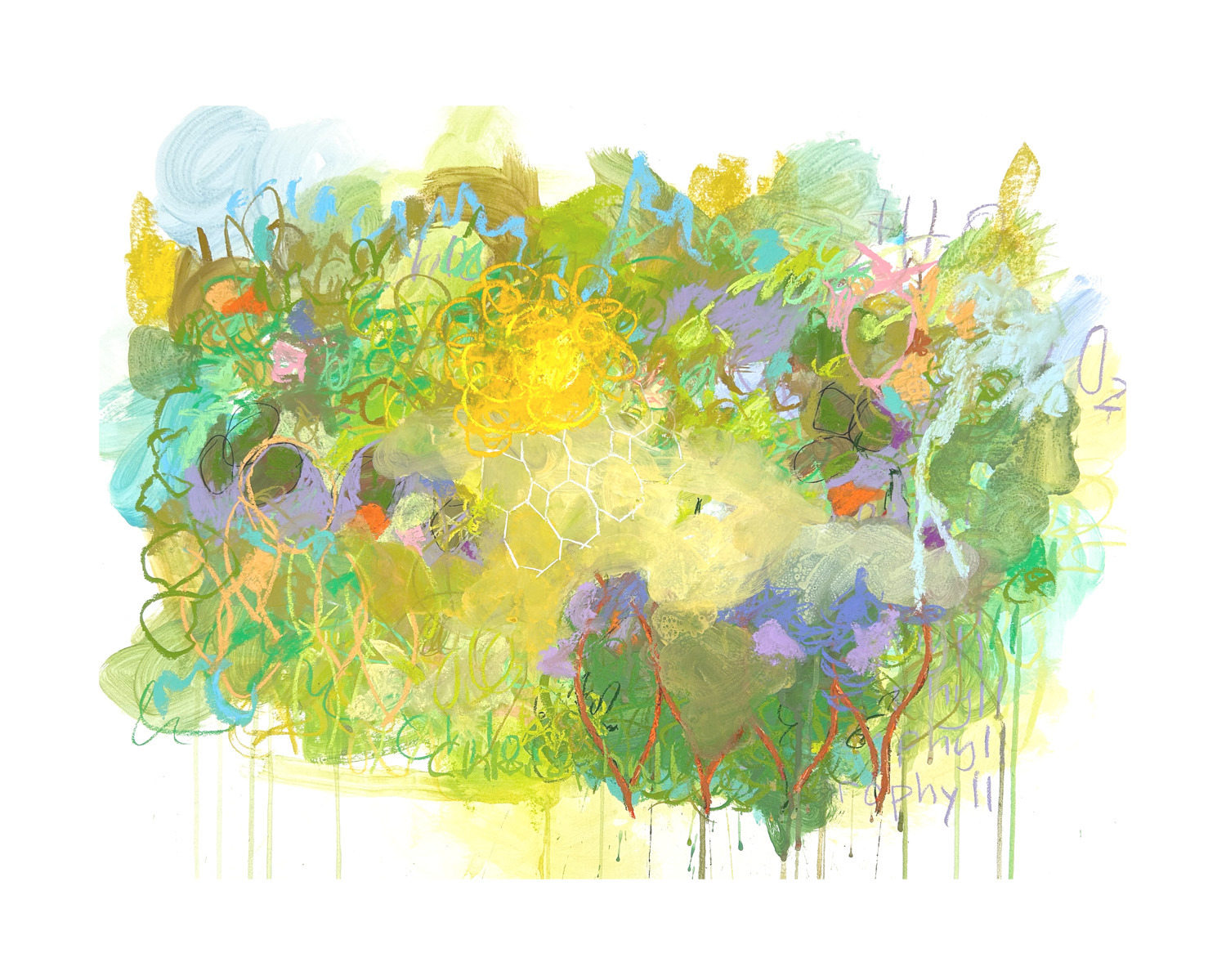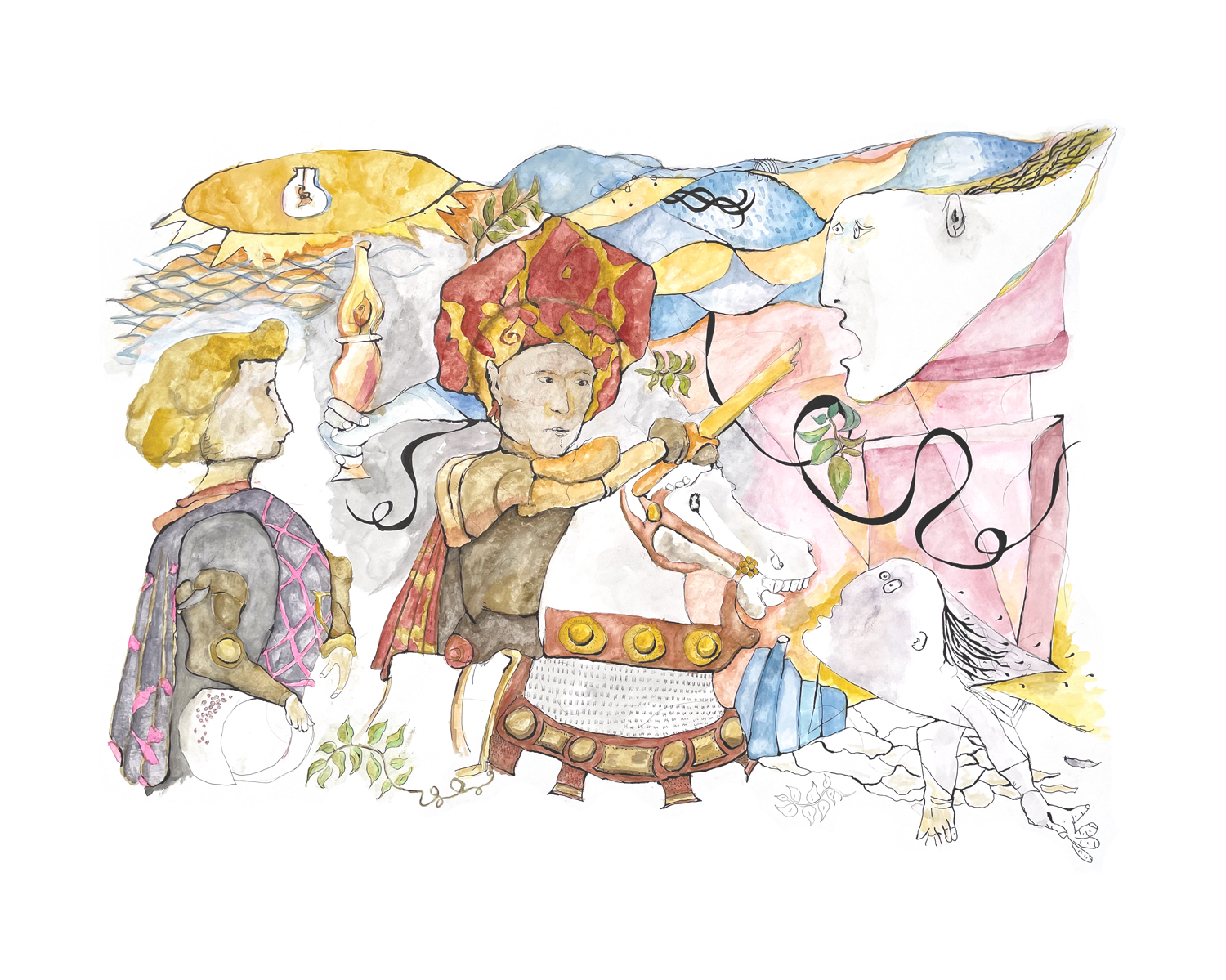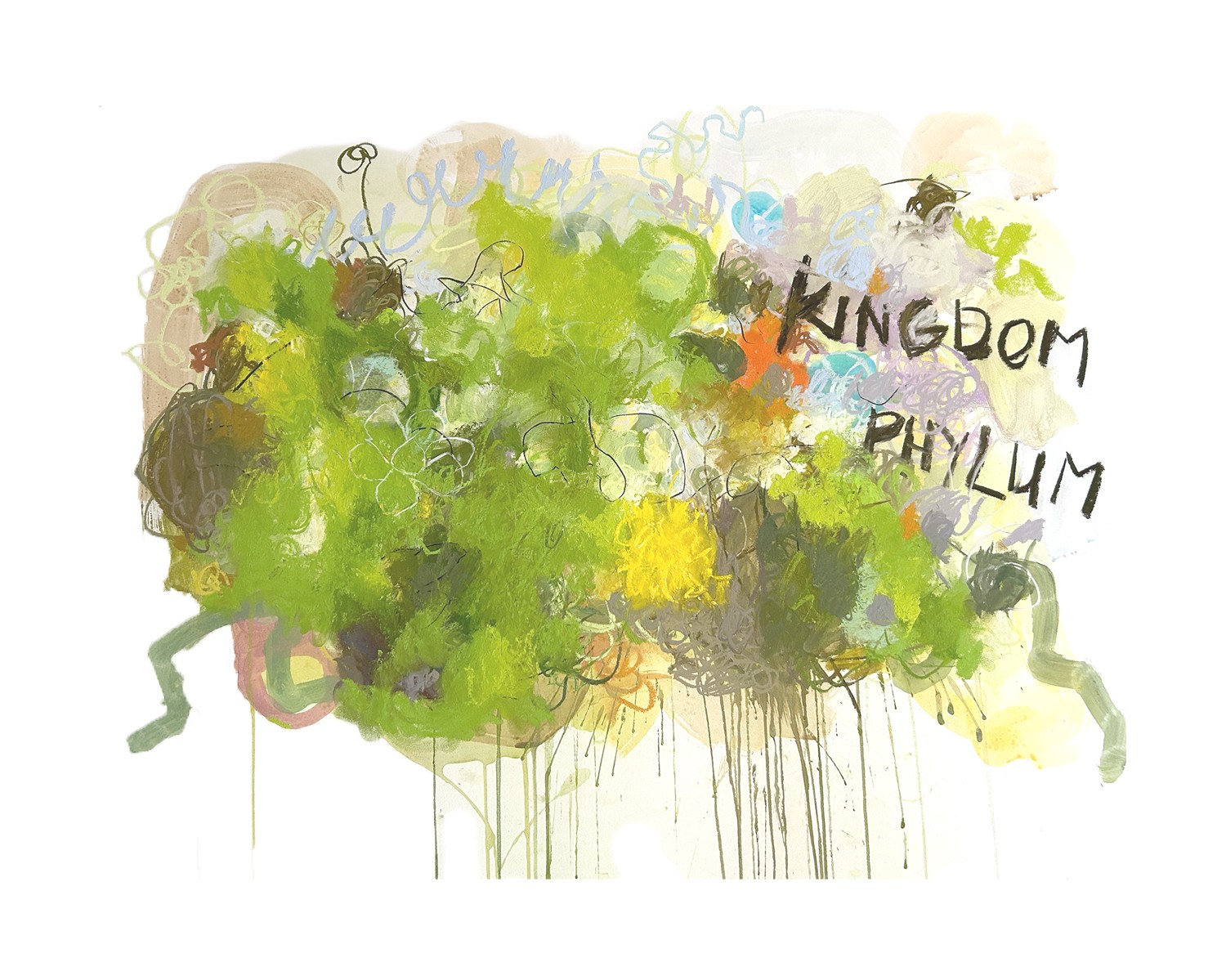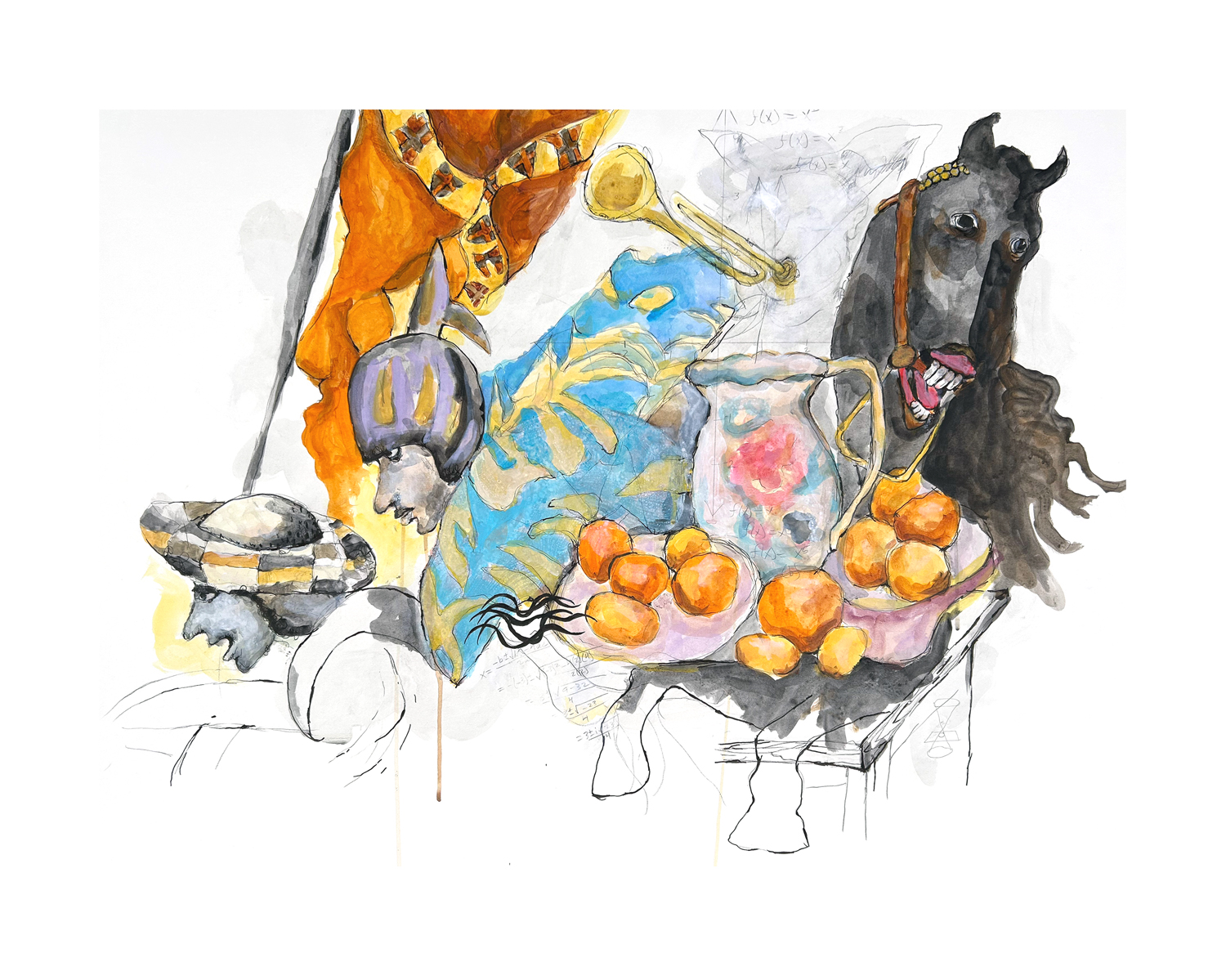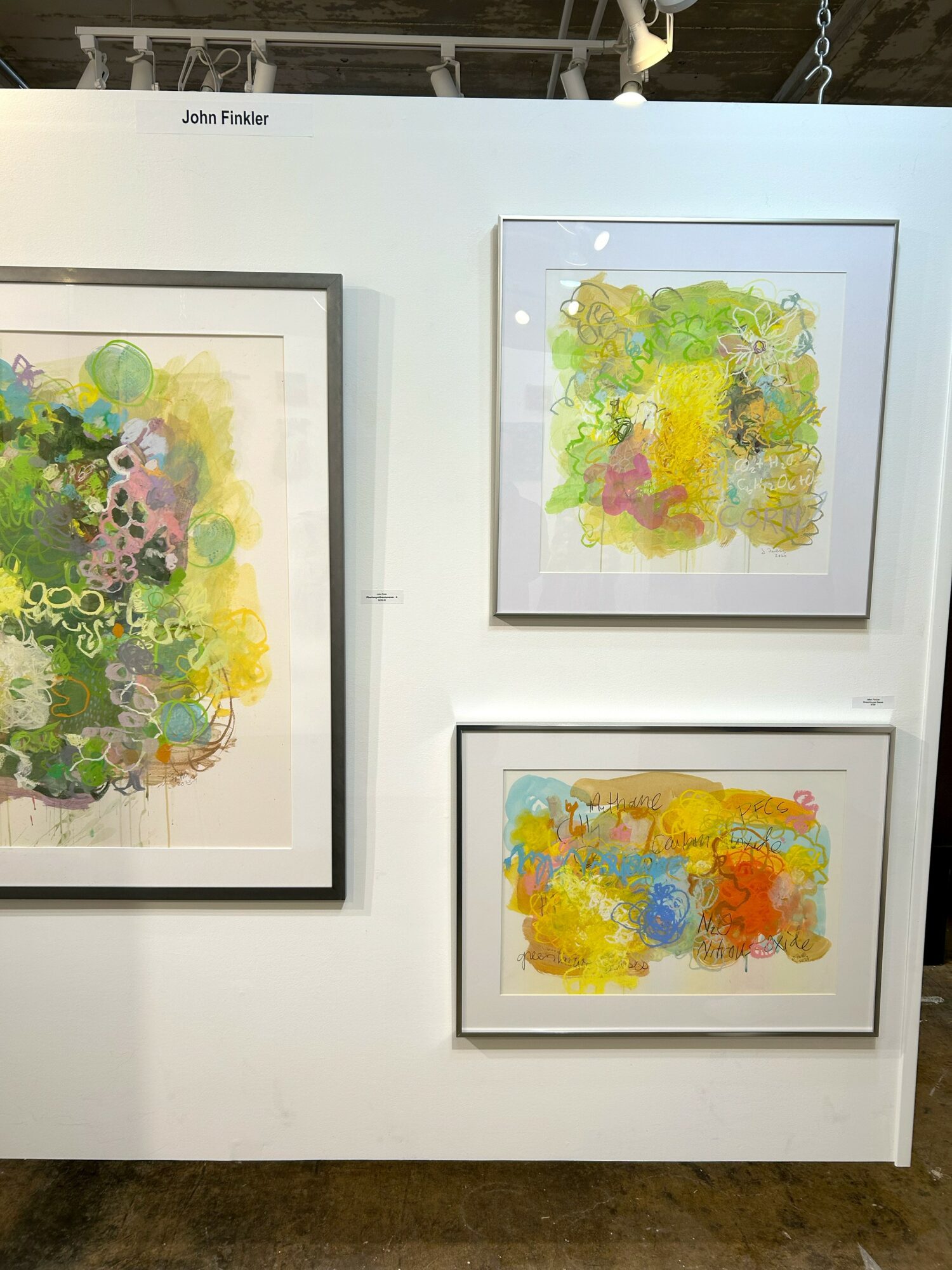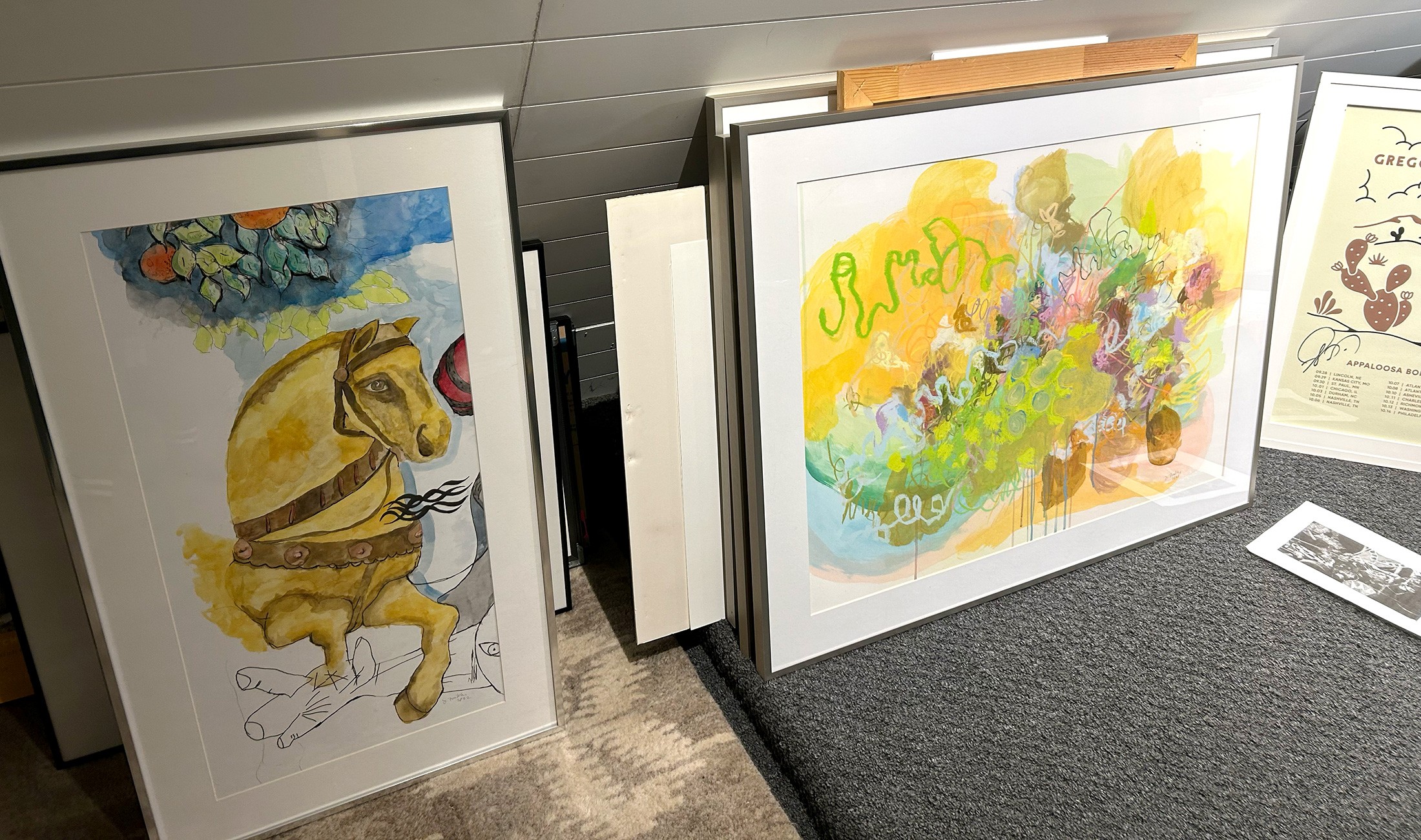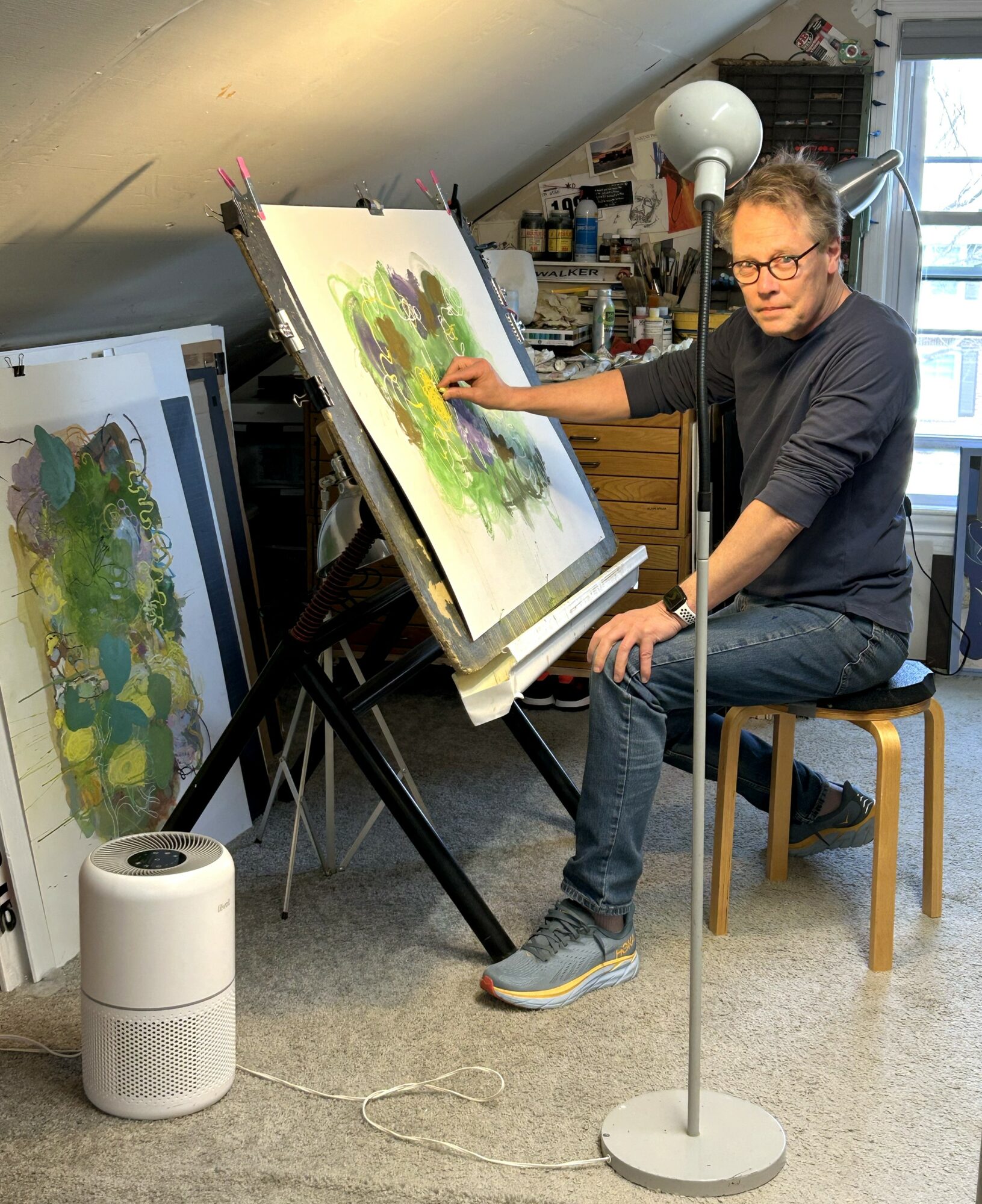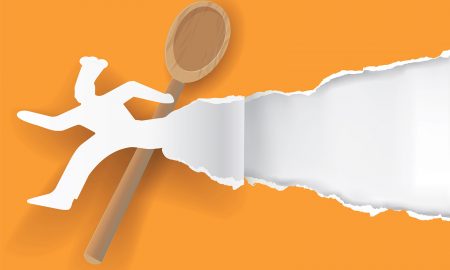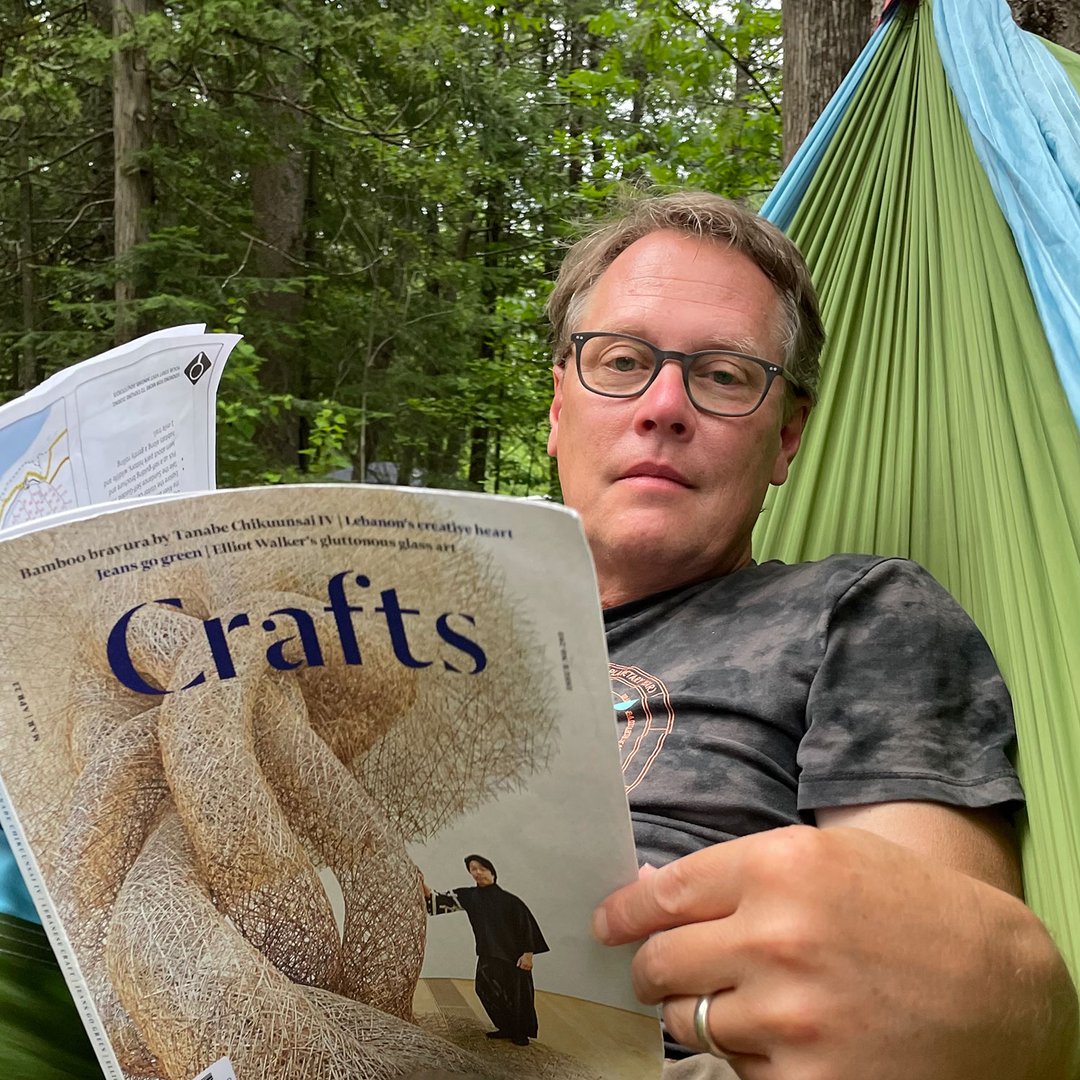

Today we’d like to introduce you to John Finkler.
Hi John, so excited to have you with us today. What can you tell us about your story?
Where I am today is working as an adjunct college instructor and artist. I teach everything from drawing to web design, currently at Hamline University and Hennepin Technical College. Since teaching is a creative endeavor, it pairs well with making art. Teaching affords me some creative freedom to explore ideas that I may be the only person in the world who cares about, and rather than spending my time on selling and marketing which I am notoriously terrible at anyway, I paint with the feeling of total freedom from commerce. How I got here goes back to having a wonderful and enlightened father who is an artist from Chicago, and professor for 40 years at Minnesota State-Mankato. My father is so good at sharing the creative experience with everybody, never talking down to people, and always humble about the absurdity of making art. Of course, making art is glorious, significant, important, and magical to us artists, but it’s pretty far removed from the everyday of most people. But even with such a father, it still took me a while to fully commit to being an artist. I finally did in my early 20’s, and have not regretted it.
Would you say it’s been a smooth road, and if not what are some of the biggest challenges you’ve faced along the way?
What comes to mind with this question is when you’re true to your art and yourself, there’s never any guarantee that anybody else is going to like or care about what you’re doing (and for the most part, they don’t!), so I’ve always had other sources of income. In talking with a neighbor last summer, I found myself saying how grateful I am to my 20 something-self for having the courage to take the enormous risk of the artistic path. The easy way seemed to just get a job, pay the bills. Why take this path of insecure, low wage economic stress and anxiety? And nobody acknowledged back then that young people even experienced these things. So you have to figure it out for yourself, and to my surprise, a young person could live on almost no money (may not be true anymore), stay creative and continue to grow as a creative. To wit, maybe that lack of material possessions gives you a better perspective on things. On top of that, not to be overly dramatic, it was failure after failure until you realize that failure is not necessarily a bad thing, telling you to give up, but part of the learning process – an old-school way of figuring things out. A friend from Art School was kind enough to remind me of this awful, hot-mess of an still life oil painting I did in Painting class (probably the first one I ever did), but after some math, I figured out that it was exactly 10 years later that one of my abstract paintings was hanging in a show at the Minneapolis Institute of Art. It takes time, and I was clearly undaunted! Without going through that in my 20’s – making art, writing down my thoughts and ideas in a journal, reading Proust, Joyce, Kafka and many others – would I now be so moved by art and often brought to tears by a good string quartet or a poem, or the thought of vanishing song birds? What I needed was to prioritize and cultivate my relation to the world (a steady job was antithetical to that), both the personal things and the parts of existence (the cosmos, rocks, weather, even history) that don’t care one wit about you.
Thanks for sharing that. So, maybe next you can tell us a bit more about your work?
My work has been, at its foundation, abstract, but I can move fairly easily into a more illusionistic mode. Some recent examples of my more representative work (or expressive realism?) brings in a little art history by mashing up two great works, Picasso’s Guernica and early Renaissance painter, Paolo Uccello’s Battle of San Romano. It’s a clash of historical styles, the implications of war, and my own interpretation tossed in for good measure. Of course, there’s no improving upon what the great master’s have done, I’m only interested in the dialogue with history, and the themes inherent in their works. In another, a battle scene of Uccello’s merges with a bucolic still life of Cezanne, a war and peace theme at play.
Recent abstract work has me, metaphorically, in the chemistry lab exploring photosynthesis and climate change, so to speak. But mostly, it’s just the raw joy I get from Nature. The series is originally inspired by a random, hand-rendered handout from a college biology class showing an impossibly tangled web of chemical formulas describing Photosynthesis that mostly made my head spin. Over time, with this handout on my refrigerator as kind of a joke for years and years, I finally started to see a certain beauty in the way science can show us the inner workings of the physical world. In the end, the world of these chemical formulas was not for me as a scientist, but I could explore them through art in a visually poetic way. And with this interest, I get to ruminate on a lot of cool things like Chlorophyll under a microscope, intricate chemical formulas, and scratch my head about how they’re seeing quantum interactions in both photosynthesis and the human mind! There’s nothing more mysterious than Quantum physics. The works in the Photosynthesis series show an over-abundance of green. I’m trying to create a sensuous richness, with some random chemical formula’s thrown in there (hoping that, in the end, all the parts/elements come together making the whole greater than the sum of its parts). The hardest part of painting is figuring out what to allow in there, because it has to ring true (so many shapes and/or colors have to be rejected), and adding the chemical equation’s onto and into the work was tough at first, probably because I’d never seen chemical equations in a painting before. But I like having them in there, and it doesn’t matter to me that I don’t fully understand everything on the scientific level.
How can people work with you, collaborate with you or support you?
I’m in a gallery, Follow the Muse, on the first floor of the Northrup King Arts Building in Minneapolis.
Contact Info:
- Website: https://johnfinkler.com/
- Instagram: https://www.instagram.com/jarthurfinkler/
